Touring the Washington DC monuments is a wonderful way to learn about US history and some of the people who have made this country great. I began visiting DC as a kid growing up in Kentucky and firmly believe that everyone should make it a priority. I now live about 3 hours drive from there so I can make a day of it. This time I had tickets to the Terracotta Warriors exhibit at 630pm, so decided to spend a beautiful spring day at the National Mall. In DC, “Mall” means grass, park, and amazing monuments, not Crate n Barrel, Banana Republic, and Williams-Sonoma.
Because parking is so difficult in downtown DC, we parked at Regan National Airport ($20/day) and took a 15 minute Metro train to the Smithsonian Station. A large demonstration for Immigration Reform was in progress, with all the requisite sign-toting and loud rallying. But it was a peaceful demonstration of several thousand, a testament to the First Amendment of Free Speech. This in no way deterred our quest for the monuments, so we veered away and meandered down the middle of the Mall.
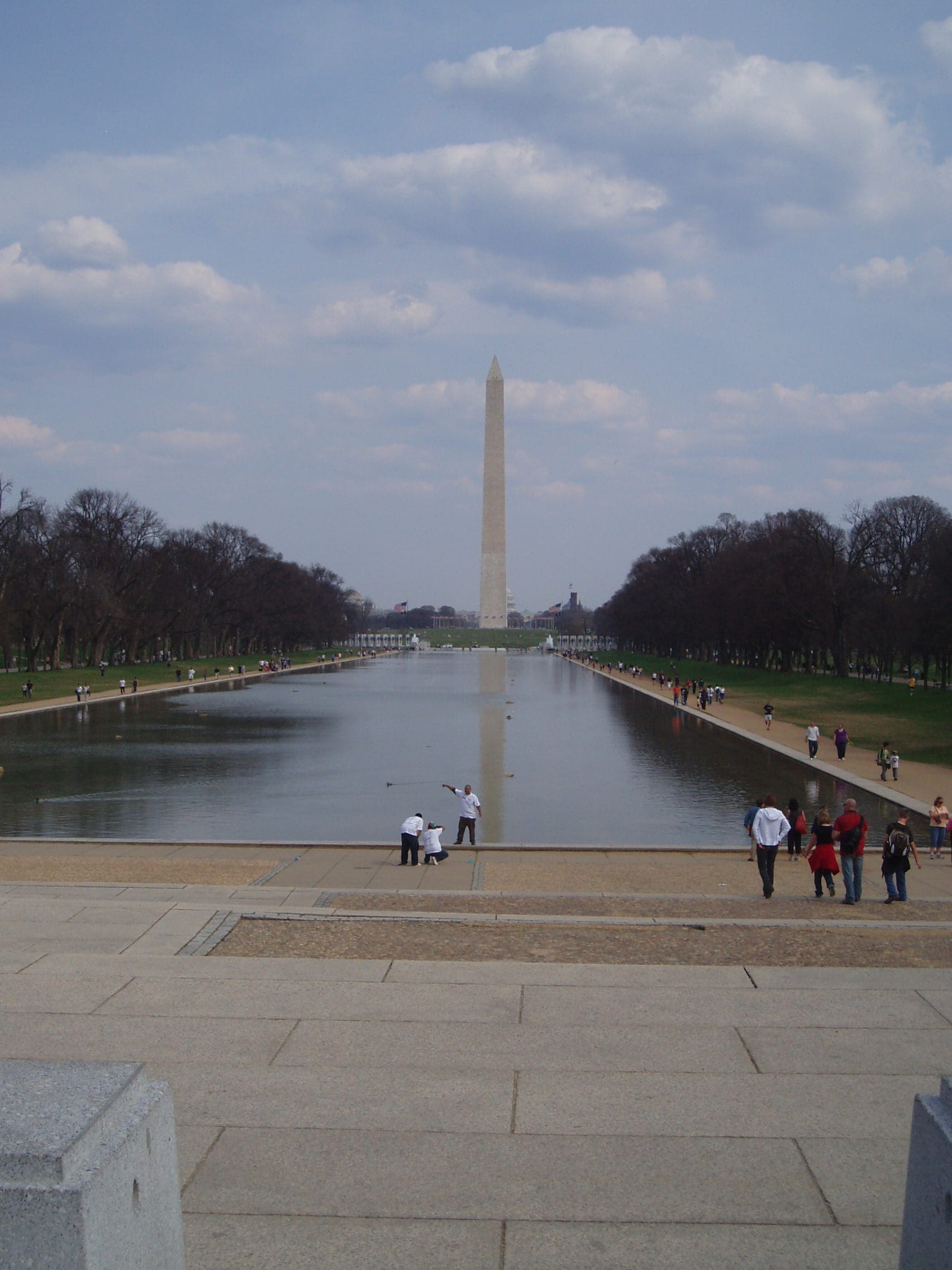
First, we came to the Washington Monument, which stands on a hill, patriotically surrounded by a circle of American flags. It is an obelisk that stands 555’ 5 1/8” tall, which honors America’s first President. There is an elevator to the top for panoramic views, but we skipped that today. On the other side of the hill, many people were flying beautiful kites.
We admired them as they swooped and dipped, then braved our way through them to the spectacular World War I Memorial. Large fountains surrounded by wreath-decked colonnades pay tribute to the men and women who served in WWI.
Next is the Reflecting Pool that lies in Constitution Gardens between the Washington Monument and the Lincoln Memorial. It is 2029 feet long, lined with shade trees and walkways, and reflects the images of the buildings on either end.
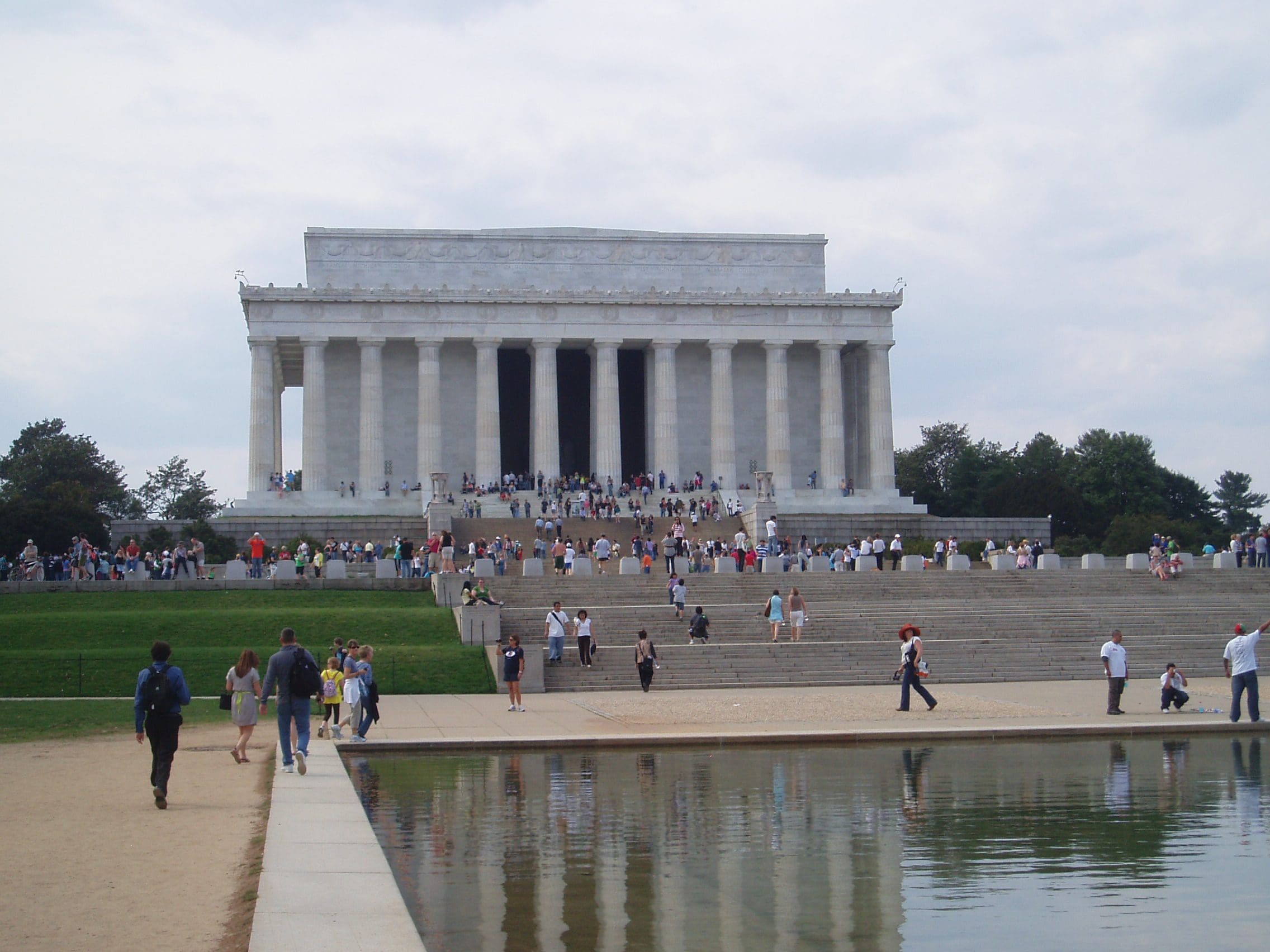
We approached the steps of the Lincoln Memorial, always one of the most inspiring for me. It was here that Martin Luther King gave his “I Have a Dream” speech in 1963 to a crowd of 250,000 people. Standing in the shadow of the HUGE replication of the man who was a moving force in our country abolishing slavery, and reading the sensitive and articulate words engraved on the walls, always gives me pause to consider how I treat my fellow man.
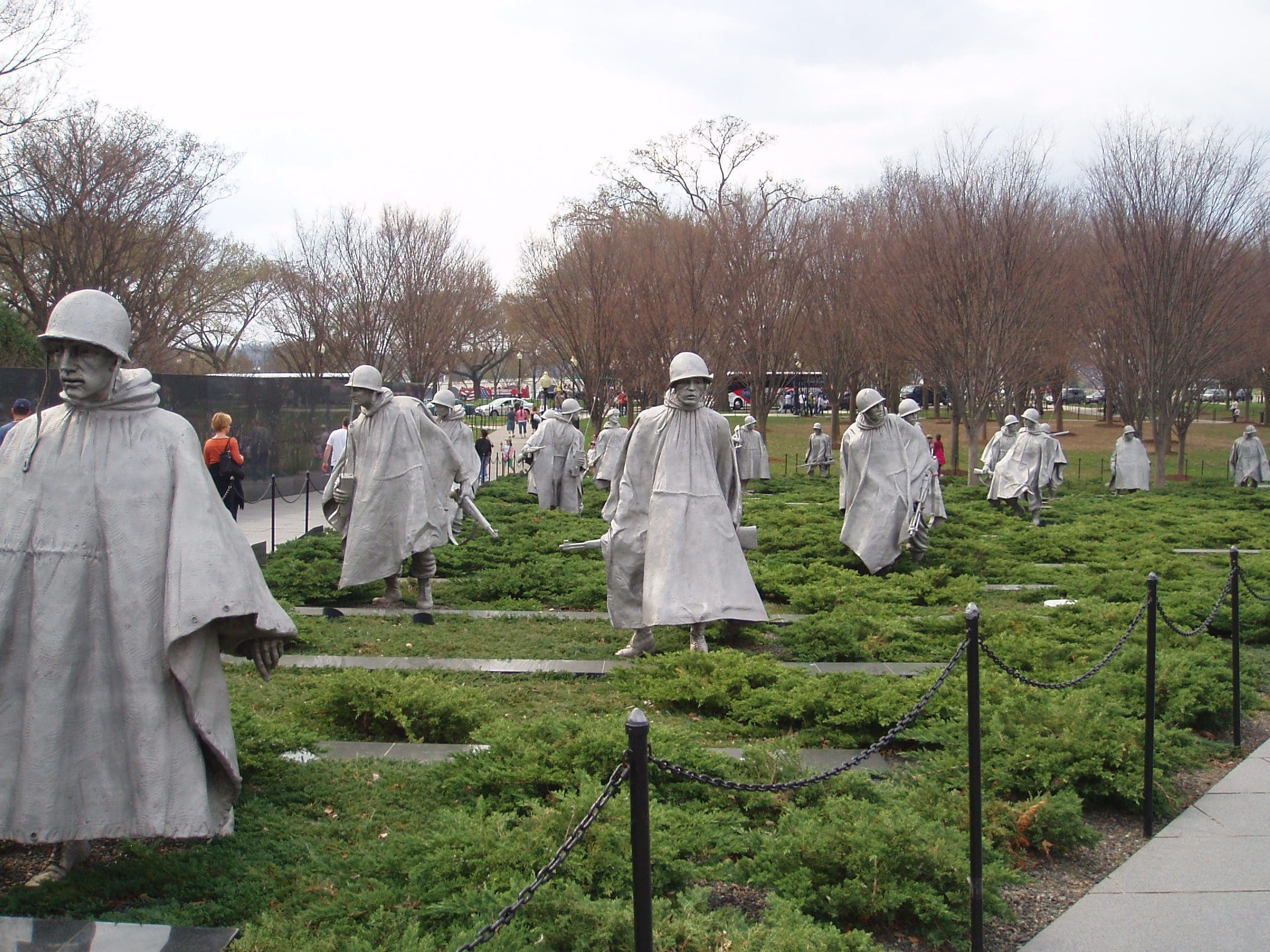
To the left and right of the Lincoln Memorial, are two moving war memorials. The Korean War Veterans Memorial is haunting with its statue garden of soldiers at war. The granite wall of the Vietnam Veterans Memorial lists thousands of names of lost souls and is a poignant representation of a wound that is slow to heal. These are powerful places that you should approach with respect and reflection. My words are simply not sufficient to give homage to the momentous sacrifices made in the name of freedom.
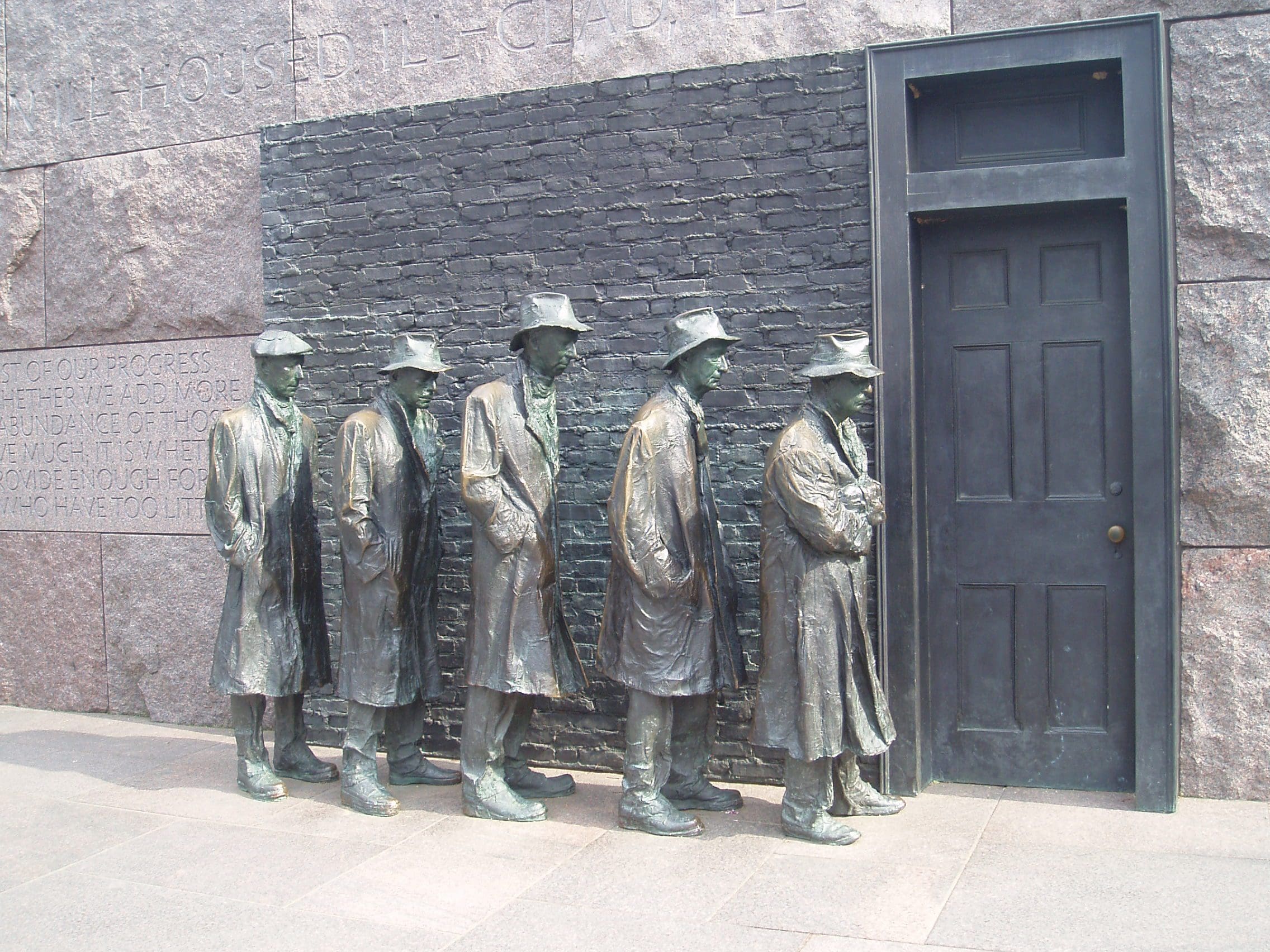
We continued our walk all the way around the Tidal Basin. I’ve never done this before but wanted to see the Franklin Delano Roosevelt Memorial and I was not disappointed. A long, walk-through outdoor exhibit of brass sculpture and waterfalls showcased this president’s challenges during his tenure.
We continued around the Tidal Basin, which is lined by hundreds of Cherry trees that were a gift from Japan in 1912. We were just about a week early for the spectacular sight of the trees in full bloom. The peak bloom dates vary with the weather from year to year and thousands of people flock to the beautiful pink and white blossoms during the annual Cherry Blossom Festival.
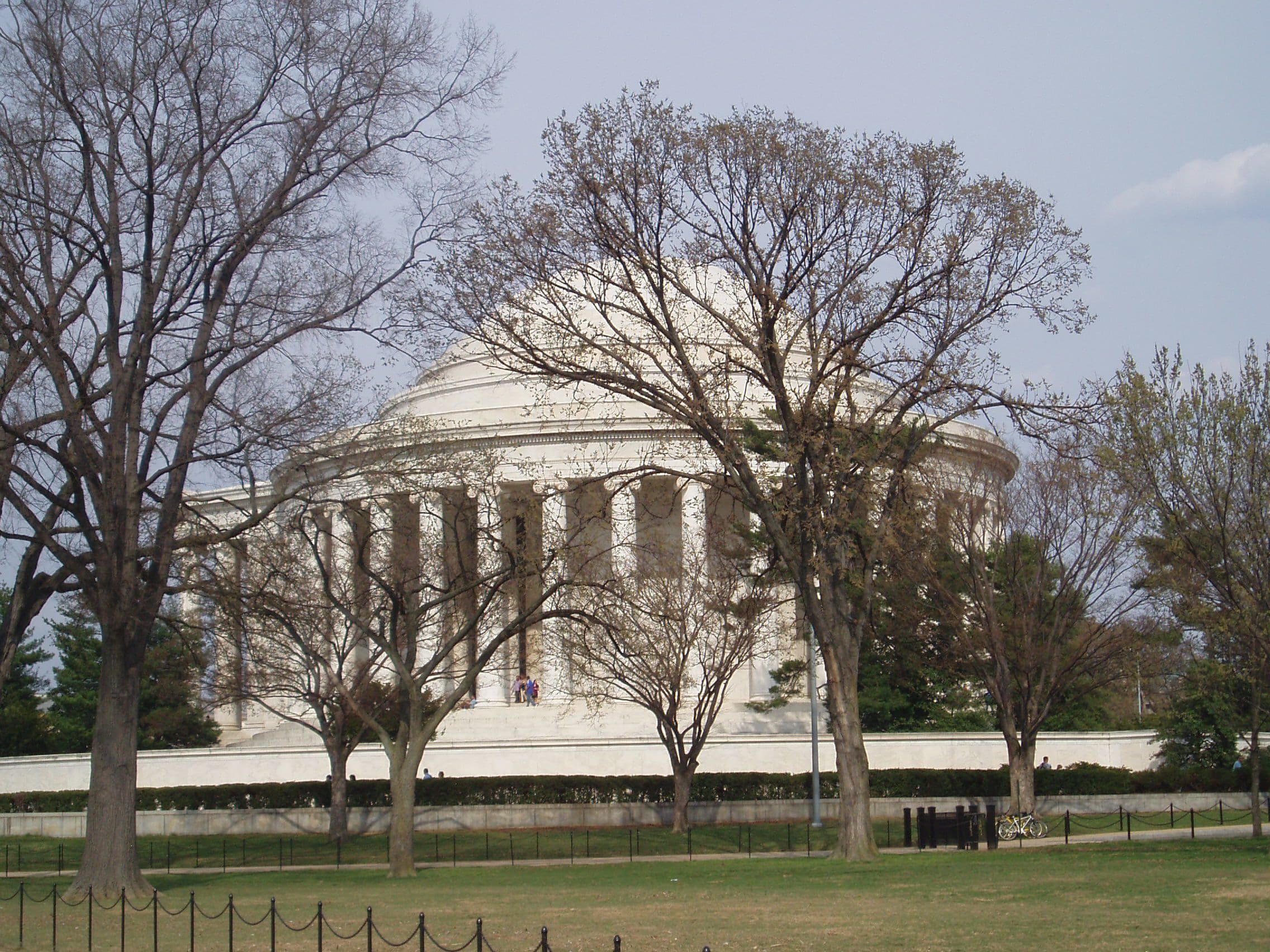
Our last stop was the Thomas Jefferson Memorial where our third president stands memorialized in architecture modeled after the Pantheon in Rome. The bronze statue of Jefferson is 19 feet tall and weighs five tons. The statue was originally built in plaster in 1941 but replaced after World War II metal restrictions were lifted.
We completed the loop around the Tidal Basin and headed back to the Smithsonian Metro station. The total walk was around five miles, but for those who are not able to walk that far, there is a hop-on/hop-off Tourmobile ($27/day) that makes stops at all the monuments, plus the museums of the Smithsonian, Arlington National Cemetery, the White House, and the Capitol Building.
To properly see DC requires at least two or three days of very active sightseeing, longer if you take it more slowly. Heck, you could spend a week in the many museums of the Smithsonian alone. You can arrange a tour of the Capital or the White House through your local Congressional office. The FBI and the Bureau of Engraving are also interesting tours. The amazing thing is that every site listed in this post is free! Whether you have one day or a week to spend, do yourself a favor and visit our nation’s capital. If you are a US citizen, you will swell with renewed patriotism. If you are a visitor, you will understand our pride.






What a beautiful post about D.C.! I work for a student travel company and write about these monuments and memorials often, but I’ll see them for the first time this June. It was so nice to read this. It made me feel all the things I’ve read (and written) will be true even when I experience it for myself.